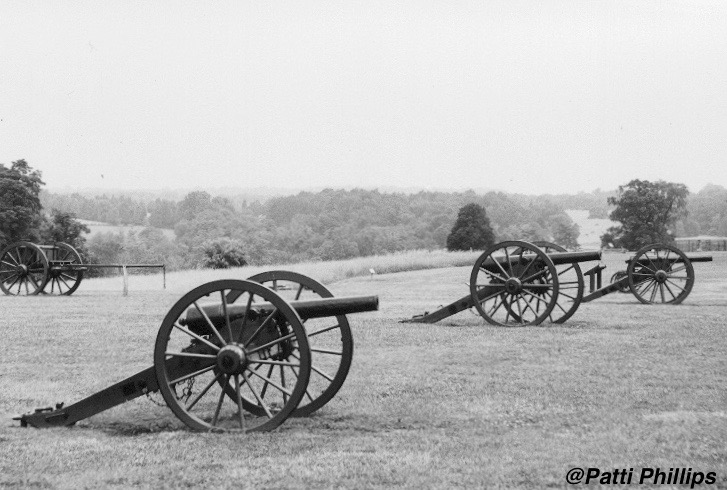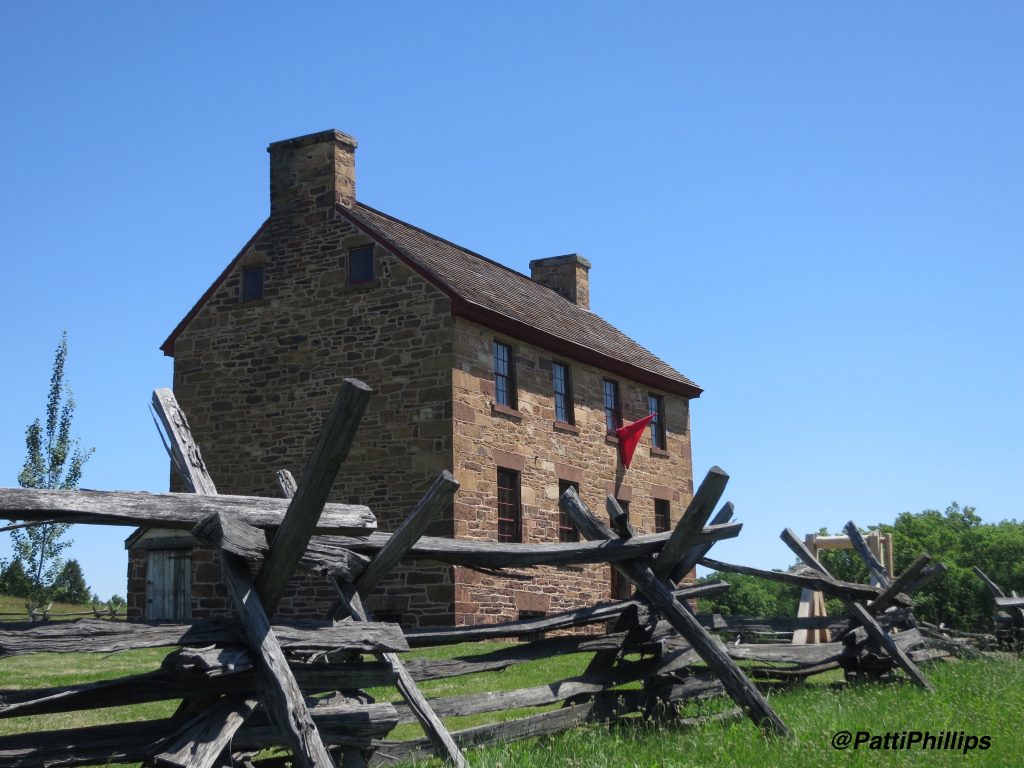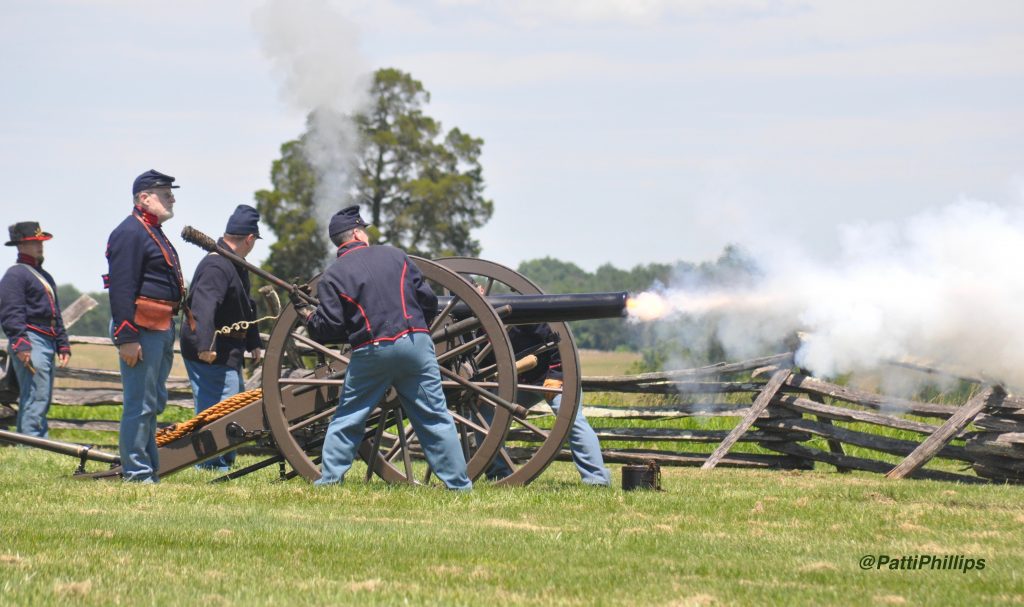
First Battle of Manassas was the first major battle of the American Civil War. It’s also known as the Battle of Bull Run because of its proximity to the Bull Run River in northern Virginia. Manassas is located 30 miles from Washington, D.C., about a ten hour walk. There are two battles with that name: the Battle of First Manassas was fought in 1861; the Second in 1862 when the Union general decided that it was time to get revenge for the first rout.
In late June, 1861, President Lincoln, who had been elected to office only a few months before, got word that there were Confederate troops guarding strategic locations near the Manassas railway junction. This proximity to D.C. made President Lincoln more than a little nervous (he had been surprised by the fall of Fort Sumter in April) and he wanted the Confederate Army quashed. This had become an in-your-face armed conflict, not just a small rebellion aimed at the policies of the newly elected government.
Early in July of 1861, Gen. Irvin McDowell’s army of 35,000 very green, 90-day volunteers left Washington, D.C. and headed toward the railroad at Manassas. McDowell hoped to capture the junction, then travel to the newly proclaimed Confederate capital of Richmond. The goal was to capture Richmond and end the war. A Union defeat was not remotely anticipated, and as was the custom at the beginning of the Civil War, people were prepared to line up with picnic baskets to observe the show.
McDowell arrived in the area on July 18, astonished to discover that the Confederate contingent was 22,000 strong. He attempted to approach both left and right flanks for the next two days. During that time, the Confederate General Beauregard sent word to Richmond for backup. 10,000 additional troops under command of General Johnston from Shenandoah Valley, gave the Union Army the slip along the way and arrived on July 20-21. Now the two armies were essentially equal in size.

McDowell’s plans of distraction and surprise under the cover of darkness and from different directions might have succeeded if he’d had a more seasoned fighting force. However, unfamiliar woods and hilly terrain were the Union Army’s enemy on the 21st. The Confederate Colonel Evans figured out that the attack at his location was a diversion and was able to briefly check the forward movement of McDowell’s troops at Matthew Hill.
But then, even with help, the Confederates had to fall back to Henry Hill, a relatively high position in the area. At that point, new brigades arrived to bolster the Southern troops (the nickname ‘Stonewall Jackson’ may have originated at Henry Hill).
Timing is everything in battle, and sometimes, taking a break to reorganize can be disastrous, even if necessary. The Union side paused for about an hour to regroup, and during that time, the Confederates took advantage of the reprieve to reform their own lines. The goal didn’t change for either side: to retain claim of Henry Hill. Renewed fighting went on for several hours until new Southern troops arrived to join the fray, forcing McDowell’s men to retreat.
In the long run, July 21st did not end all that well for either side. The withdrawing Union volunteers found the road back to Washington crammed with sightseers, preventing an orderly retreat. Panic ensued. The Confederates were too tired and disorderly to follow up on their success, so by the morning of the 22nd, the defeated Union army was safely back behind their lines.
Learning from that defeat that taking poorly trained and undisciplined soldiers into battle would end badly, Gen. George B. McClellan took charge of the Washington based Federal forces, established the Army of the Potomac and whipped them into combat readiness. The Union plan was to still to stop the Confederates by attacking Richmond, the Southern capital. When McClellan was ready in March of 1862, he left D.C. and had Richmond in his sights by May.
The Southerners left the Manassas position and after a series of bloody battles and a change of Confederate leadership to Robert E. Lee, pushed McClellan away from Richmond. In the next few weeks, Lee’s tactical advantage would shift back and forth, and he knew that to finally defeat the Union troops, he would have to send Jackson to outflank and defeat them decisively. On August 27th, Jackson’s well-trained troops seized the supply depot at Manassas Junction, burned the Union supplies, and moved to the woods near the first Manassas battlefield to wait for the Confederate army to return.
General Pope was angry that his supplies had been destroyed and left a successful battleground to take revenge on Jackson at Manassas. But, Jackson was ready and attacked part of the Union line as it passed on Warrenton Turnpike in a nasty battle that lasted for several hours. On the 29th, Pope’s information was faulty and hampered by a lack of strategic planning, kept throwing his men at Confederate positions, without doing sustained damage to their lines.

On the 30th, with poor intel again, Pope thought that the Confederates were in retreat, but in fact had not gone anywhere. Pope sent more men at Jackson’s line, a group attacked at the unfinished railroad’s Deep Cut area, but the Southerners prevailed in another bloody action. The Union Army was in disarray, and the Confederates pressed their advantage. Heroic fighting by the Union soldiers saved them from annihilation, and after dark, the remaining Union forces were able to escape back across the Bull Run River to Washington, D.C.
The Second Manassas campaign opened the way for the south’s first invasion of the north.
Stats:
First Battle of Manassas lasted one day.
Combined forces of Union and Confederates: 59,200
Death toll: 870
Wounded: 2600
Missing: 1200+
In the year between the First and Second Battles of Manassas, the weapons became deadlier, the soldiers better trained, and the generals more determined to wipe out the opposing forces. Each side was deeply committed to the rightness of their own ideals.
Second Battle of Manassas lasted three days.
Combined forces of Union and Confederates: 125,000
Death toll: 3,300
Wounded: 14,654
Missing or captured: 5,000+
Not long after, the two armies would meet again at Antietam, the bloodiest battle in American history.
Memorial Day now falls on the last Monday in May in the U.S. It is a day to honor and remember those who gave their lives in active duty military service. If you have the opportunity, a visit to one of the national battlefield parks will explain in depth why we were at war, while paying tribute to those who made the ultimate sacrifice.
https://www.nps.gov/mana/index.htm
*Photos by Patti Phillips

nice post, Patti….I encourage all Americans to visit these and more….My husband, Ed and i have been to many,some on our Honeymoon 8/69…he took slides for his American History classes…..don’t suggest walking any battlefield in the heat with new patent leather heels! As they were part of my bridal trousseau, those of you who are women of a “certain age,” you’ll get it! lol
I heartily agree, Barbara – visit as many as you can, but definitely wear comfortable clothing. 😉 Our next battlefield trip is to Fredericksburg, VA.